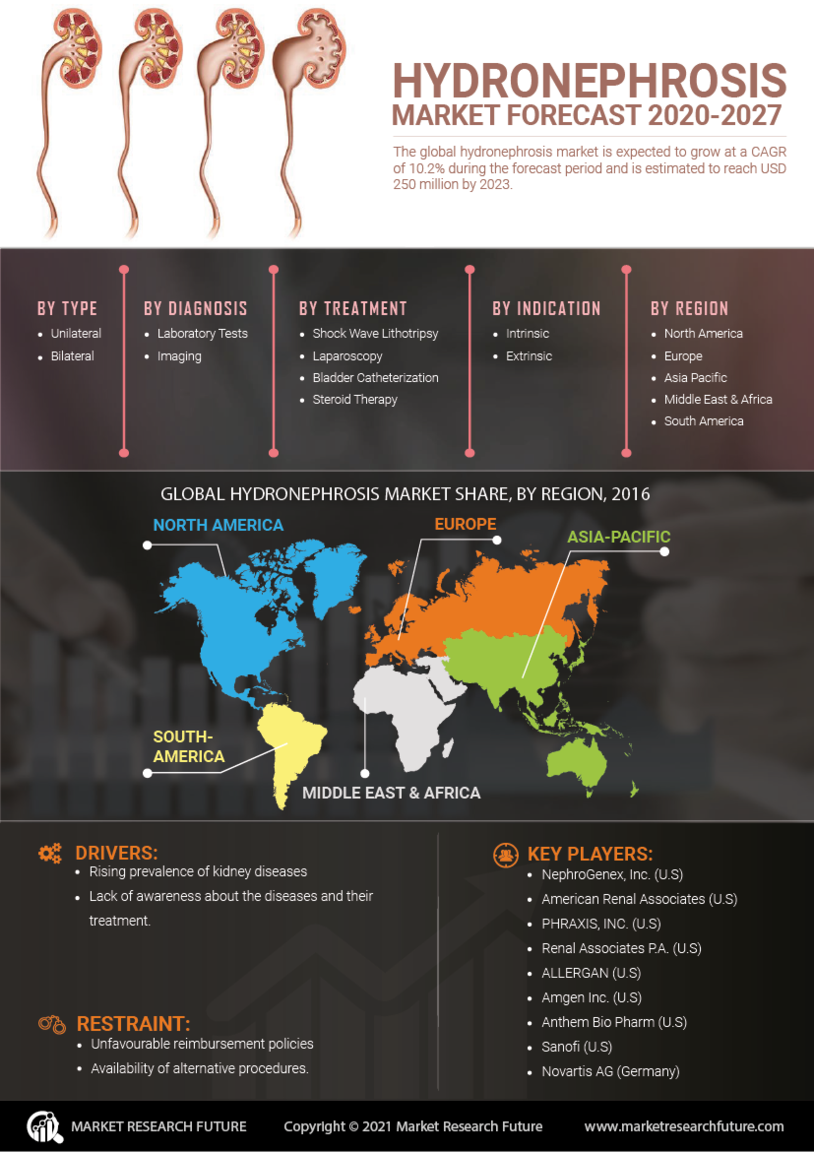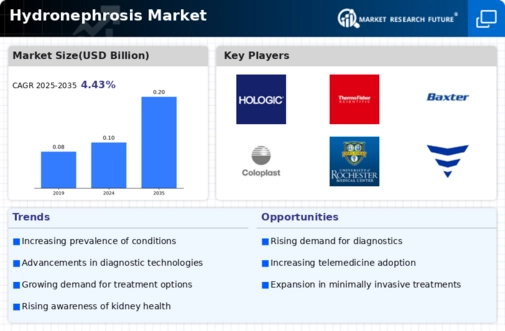Increase in Healthcare Expenditure
The rise in healthcare expenditure across various regions is a significant driver for the Hydronephrosis Market. Governments and private sectors are investing more in healthcare infrastructure, which includes the development of advanced diagnostic and treatment facilities for conditions like hydronephrosis. This increase in funding is likely to enhance access to healthcare services, allowing more patients to receive timely diagnosis and treatment. Additionally, higher healthcare spending often correlates with improved patient outcomes, as it enables the adoption of innovative technologies and therapies. Consequently, the Hydronephrosis Market stands to gain from this trend, as enhanced healthcare resources facilitate better management of hydronephrosis.
Rising Incidence of Urinary Tract Disorders
The increasing prevalence of urinary tract disorders, including hydronephrosis, is a notable driver for the Hydronephrosis Market. Factors such as lifestyle changes, dietary habits, and an aging population contribute to this rise. According to recent data, urinary tract infections and related complications are becoming more common, leading to a higher demand for effective diagnostic and treatment options. This trend is likely to propel the market forward, as healthcare providers seek innovative solutions to manage these conditions. The growing awareness of urinary health issues among the population further emphasizes the need for advancements in the Hydronephrosis Market, as patients become more proactive in seeking medical attention for their symptoms.
Advancements in Medical Imaging Technologies
Technological innovations in medical imaging, such as ultrasound, CT scans, and MRI, are transforming the landscape of the Hydronephrosis Market. These advancements enable earlier and more accurate diagnosis of hydronephrosis, facilitating timely intervention. The integration of artificial intelligence in imaging analysis is also enhancing diagnostic precision, which is crucial for effective treatment planning. As imaging technologies continue to evolve, they are expected to drive market growth by improving patient outcomes and reducing the burden on healthcare systems. The increased efficiency and accuracy of these technologies are likely to attract investments and foster research and development within the Hydronephrosis Market.
Growing Awareness and Education on Kidney Health
There is a notable increase in awareness and education regarding kidney health, which is positively influencing the Hydronephrosis Market. Campaigns aimed at educating the public about the importance of kidney function and the risks associated with hydronephrosis are gaining traction. This heightened awareness is leading to earlier detection and treatment of kidney-related issues, thereby driving demand for healthcare services and products related to hydronephrosis. Furthermore, educational initiatives by healthcare organizations are likely to empower patients to seek timely medical advice, which could result in a more proactive approach to managing hydronephrosis. As a result, the Hydronephrosis Market is expected to benefit from this growing focus on kidney health.
Emergence of Minimally Invasive Surgical Techniques
The advent of minimally invasive surgical techniques is reshaping the treatment landscape within the Hydronephrosis Market. These techniques, which include laparoscopic and robotic-assisted surgeries, offer patients reduced recovery times and lower risk of complications compared to traditional surgical methods. As these procedures become more widely adopted, they are likely to drive demand for surgical interventions in hydronephrosis cases. The growing preference for minimally invasive options among both patients and healthcare providers is expected to stimulate market growth. Furthermore, advancements in surgical technologies are likely to enhance the effectiveness of these procedures, thereby contributing positively to the overall dynamics of the Hydronephrosis Market.


















Leave a Comment